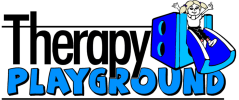http://www.myintegrationstation.com/index_files/PediatricDevelopment.htm
By 3 Months:
Social/Emotional
Begins to develop a smile
Imitates some movements and facial expressions
Gross Motor
Raises Head and chest when on tummy
Supports upper body with arms when on tummy
Pushes into surface when feet are placed on firm surface
Fine Motor
Opens and closes hands
Brings hand to mouth
Grasps rattles
By 7 Months:
Social/Emotional
Enjoys social interaction
Appears happy often
Gross Motor
Rolls front to back and back to front
Gets into sitting without assistance
Crawls forward on belly
Fine Motor
Reaches with one hand
Transfers object from hand to hand
Uses raking of the hand to grasp object
Finger-feeds self
Cognitive
Finds partially hidden object
Explores objects with hands and mouth
Language
Babbles
By 12 Months:
Social/Emotional
Shy with strangers
Shows preference for certain people and toys
Tests parent responses to behaviors
Finger-feeds self
Gross Motor
Crawls on hands and knees
Pulls to stand
Walks holding onto furniture
Takes two or three steps without support
Fine Motor
Uses pincer grasp
Bangs two objects together
Puts objects into container
Releases objects voluntarily
Cognitive
Explores objects in many ways (shaking, banging, throwing, dropping)
Finds hidden objects easily
Begins to use objects correctly (brushing hair, drinking from cup)
Language
Responds to simple one-step verbal command with gesture
Understands “no”
Babbles with changes in tone
By 18 Months:
Social/Emotional
Separation anxiety increases
Begins to show defiant behavior
Gross Motor
Walks alone
Pulls toys while walking
Fine Motor
Turns over container to pour out contents
Spoons feeds
Uses open and sippy cup
Cognitive
Imitates housework
Language
Responds to one step command without gesture
Points to body parts
Points to object or picture when named for them
Says several single words
By 24 Months:
Social/Emotional
Imitates behaviors of others particularly adults and older children
Increasingly excited about company of other children
Separation anxiety begins to fade
Gross Motor
Carries large toy or several toys while walking
Begins to run
Kicks a ball
Walks up and down stairs with support
Fine Motor
Scribbles
Builds tower of 4 or more blocks
Demonstrates handedness
Cognitive
Helps with undressing
Finds objects hidden under multiple covers
Begins to sort by shapes and colors
Begins to engage in parallel play
Begins make believe play
Language
Follows a two-step command
Uses simple phrases
Uses 2-4 word sentences
By 36 Months/3 years:
Social/Emotional
Imitates adults and playmates
Shows affection for playmates
Can take turns in games
Expresses a wide range of emotions
Separates easily from parents
Gross Motor
Climbs well
Walks up and down stair alternating feet
Runs easily
Pedals a tricycle
Bends over without falling
Fine Motor
Makes lines vertically, horizontally, and scribbles circles
Turns pages of a book one at a time
Builds a 6 block tower
Holds a crayon or pencil in writing position
Turns rotating handles
Cognitive
Makes mechanical toys work
Plays make-believe with dolls and animals
Participates in cooperative play
Completes inset puzzles with 3-4 pieces
Undresses self
Toilet training begins
Language
Understands most sentences
Understands placement in space (in, on, under)
Uses 4-5 word sentences
By 48 Months/4 years:
Social/Emotional
Interested in new experiences
Plays “mom” or “dad”
Dresses and Undresses
Often cannot tell the difference between fantasy and reality
Gross Motor
Hops and stands on one foot
Goes up and down stairs without support
Throws a ball overhead
Catches a bounced ball most of the time
Fine Motor
Copies squares
Draws a person with 2-4 body parts
Uses scissors
Draws circles and squares
Begins to copy capital letters
Cognitive
Correctly names colors
Understands concept of counting
Begins to understand time
Understands the concept of “same” and “different”
Language
Has mastered some basic rules of grammar
Speaks clearly enough for others to understand them
Tells stories
By 60 Months/5 years:
Social/Emotional
Wants to please friends
More likely to agree to rules
Likes to sing, dance, act
Aware of gender
Able to distinguish fantasy from reality
Gross Motor
Stands on one foot for 10 seconds or longer
Hops
Somersaults
Swings
Beginning to skip
Fine Motor
Copies triangle and other shapes
Draws a person with a body
Prints uppercase letters
Cuts on line consistently
Uses fork and spoon
Cares for own toileting needs
Cognitive
Can count 10 or more objects
Knows about use of everyday items (food, money)
Language
Recalls part of a story
Uses future tense
Says name and address
By 6 years:
Social/Emotional
Needs to win and may change rules to suit
Increasingly aware that others have feelings
Shows more interest in taking care of his or her self without help
Cleans his or her room, including making the bed
Likes board games, crafts and other constructive projects
Gross Motor
Can move in time with music or a beat
Very interested in climbing and balancing, takes risks
Learns to skip with rope
More in control of his or her body
Bounces and catches tennis ball
Fine Motor
Holds a pencil with three fingers, movement from fingers
Copies a diamond
Draws a person with detail
Writes alphabet
Ties shoelaces without help
Eye-hand coordination significantly improves
Masters buttons and fasteners
Cuts with a knife
Cognitive
Develops reasoning skills
Learn through language and logic/reasoning
Child shows a strong desire to learn
Language
Developing reading skills well
Organizes events in order (beginning, middle, and end)
By 7 years:
Social/Emotional
Desires to be perfect and is quite self-critical
Tends to complain; has strong emotional reactions
Understands the difference between right and wrong
Takes direction well
Gross Motor
Has good balance
Executes more complicated gymnastics such as a cartwheel
Activities become more sport specific
Fine Motor
Proficient with paper and pencil tasks
Able to organize multi-step sequences
Cognitive
Able to solve more complex problems
Individual learning style becomes more clear-cut
Can solve simple math problems using objects
Language
Uses a vocabulary of several thousand words
